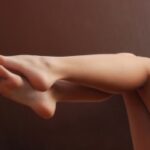If you had seen me in shorts three years ago, no doubt you would have wondered, “Good heavens! What’s wrong with her legs!”
My varicose and spider veins were so pronounced that it looked like my lower legs were terribly bruised. Even though I was only 45, my legs looked like they belonged to a much older woman.
Not only did my legs look awful, they itched constantly and felt “heavy.” Although I exercised and was in good shape, I felt tired all the time. I found out later that I had severe venous insufficiency – blood was pooling in my leg veins and not getting back to my heart the way it was supposed to.
I’m not alone. Varicose veins are the most common vascular problem in the United States, affecting more than 60 million people. They are an exceedingly common problem for women. Most American women, especially those older than 40, have bulging, painful leg veins, often due to pregnancy or weight gain. Genetics are also a factor: Both my parents suffer from varicose veins, so it would have been hard for me to escape the same fate.
Veins are called “varicose” when they enlarge and can’t return blood properly. Normally, a series of one-way valves inside the veins help blood get back up from the legs to the heart. But when the valves become damaged or diseased, the blood can’t move out, and the veins expand. This is also called chronic venous insufficiency (CVI).
Varicose veins aren’t just a cosmetic concern. They can pose a health risk – possible complications include skin ulcers, phlebitis, and blood clots. I wasn’t yet experiencing any of these serious conditions, but one or more were certainly in my future if I didn’t take action.
Of course, I didn’t like the way my legs looked, either.
To my dismay, I started noticing the twisted, bulging veins on my lower legs when I was only 28. After two pregnancies, they were much worse. So two years ago, I decided it was time to get rid of them. I began researching the posssibilities.
Luckily, new procedures have made it much quicker and easier to eliminate this problem.
In the old days, vein stripping was the only option for varicose vein sufferers. Vein stripping is just what it sounds like – the veins are literally pulled out of the leg, a procedure that requires general anesthetic, a hospital stay, and a long and painful recovery – often weeks or months.
I knew that wasn’t for me.
Vein closure, a technique developed over the past decade and now readily available, sounded like a better alternative.
My research indicated that vein closure could be done in the doctor’s office in an hour or so. The patient is sedated and numbing shots of lidocaine are used during the produre. Those who undergo the procedure can go back to most of their normal activities the following day. There is no downtime, and the doctors I spoke with said that the results were better than vein stripping.
In vein closure, only a few tiny incisions must be made, to allow the insertion of a small catheter (tube) inside the vein. Radiofrequency energy is used to seal the vein as the catheter is pulled through it.
A similar technique involves a small laser fiber being inserted into the vein. Pulses of laser light seal the vein shut. This is also done in the doctor’s office under local anesthesia.
Other people I knew who had had vein closures recommended going to a vascular surgeon, a doctor who specializes in vein disorders. I chose a vascular surgeon who had done many vein closures and was experienced in the technique using VNUS radiofrequency.
Although often you will find dermatologists and plastic surgeons offering vein closure, I felt that a vascular surgeon would be more attentive in keeping my veins healthy, rather than simply solving an unsightly problem. Also, I believed (and I think it turned out to be true), that my insurance might be more likely to pay for the procedure if it was a medical necessity, not just cosmetic.
The process turned out to be time-consuming, but ultimately worth every minute. First, I had a consultation with the doctor’s assistant, and then an ultrasound of my leg veins. This was to show exactly which veins had gone bad. It turned out that the superficial saphenous veins in both legs had bad valves, blood was pooling in my legs, and was not returning to my heart as it should be.
On my next appointment, I met with the doctor, who went over the procedure with me. As with any surgery these days, consent forms had to be signed.
I could only get one leg done at a time, so I started with the left, which was the itchiest and most unsightly. After entering the waiting room, I was given a cup with a Vicodin and a Valium to take. After half an hour, I went into the surgery room, where I laid on a table and was injected with a topical anesthetic, lidocaine, at the site of the incisions.
I was actually so relaxed at this point that I fell asleep on the table. That’s how easy it was.
When it was over, the incision sites were bandaged and I was given compression stockings to wear. The stockings had to stay on for several days, day and night. Then I had to keep wearing them during the day for a few weeks.
Six weeks later, I went back for the followup on the left leg, and not long after that, went to have the right leg done. My doctor also did followups on both legs at six months and one year after the procedures.
My vein closures were a success. There were some tiny scars from the incisions, which have faded. Eighteen months later, the veins are still shut tight. The blood flow is being handled by other leg veins. Eventually, the doctor says, the closed veins will die off and be absorbed. My body doesn’t need them.
The best part? My insurance company realized it was a medical issue, not just a cosmetic one, and paid for 80 percent of the procedure. The total for both legs, plus ultrasounds and followup appointments, was around $10,000. So my out-of-pocket expense was about $2,000.
Sounds like a lot, but it has been worth every penny.
Since my varicose vein procedure, I have had an improvement in the quality of my life. No more pain or itchiness where the veins bulged out. No more “heavy” sensations or tiredness. My energy level has improved dramatically – in fact, I feel better than I did in my 30s.
I am still undergoing some sclerotherapy injections to get rid of the minor spider veins that still linger. But I couldn’t be happier about the change brought about by the vein closure. Feeling better and looking better – that’s about as good as it gets.



